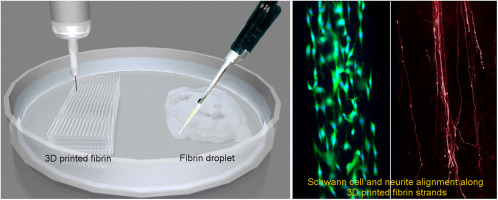Inkjet Printer Technology and Stem Cells

Researchers at Iowa State University have used inkjet printer nanotechnology to develop a better way of differentiating stem cells. The experiments have been conducted on stem cells that are vital to nerve cell regeneration.
Producing Schwann Cells in Useful Numbers
Schwann cells are responsible for forming the sheath that surrounds axons. Axons are the tail-like extensions of nerve cells and are responsible for transmitting electrical impulses. Schwann cells help regenerate axons and secrete substances that keep nerve cells healthy. However, scientists have struggled to produce Schwann cells in useful numbers. The chemical process of differentiating mesenchymal stem cells into Schwann cells is not only expensive, but also arduous.
Inkjet Printer Nanotechnology Holds the Key
To overcome this hurdle, researchers at Iowa State utilized inkjet printer nanotechnology and printed multiple layers of graphene circuits. Lasers were used to improve the conductivity and surface architecture of these circuits. Mesenchymal stem cells were found to adhere well to the circuit’s 3D raised nano-structure. Moreover, it was found that differentiation into Schwann cells could be promoted by introducing a small amount of electricity (100 millivolts) for 10 minutes every day over a two-week period.
This electrical stimulation of graphene circuit-bound mesenchymal stem cells is very effective, say the researchers. Not only do a larger percentage of MSCs differentiate into Schwann cells, but the differentiated cells also produce more nerve growth factor with this method compared to the chemical process. The method has huge potential, says study co-author Metin Uz. The results have been published in the journal Advanced Healthcare Materials.
Electrical Stimulation: Solving Problems of Stem Cell Differentiation
Electrical stimulation solves several of the problems typically encountered during stem cell differentiation in the laboratory by:
- Reducing the number of steps required for chemical processing
- Eliminating the need to add nerve growth factors and thus lowering cost
- Providing increased control of the stem cell differentiation process
- Creating an artificial low-maintenance framework for nerve repair
Graphene: A Wonder Material
The key to the success of the electrical stimulation process is graphene – a wonder material that is an excellent conductor of heat and electricity and is stable, strong, and biocompatible. Thus, it permits production of a flexible, low-cost system for stem cell differentiation. However, there are some roadblocks – graphene requires treatment with chemicals or high temperatures to improve its conductivity, processes that can damage materials like paper and plastic.
The research group solved this problem by using laser technology to selectively irradiate graphene oxide and convert it to graphene under computer control, improving electrical conductivity a thousand-fold.
References:
1. How inkjet printers help transform stem cells


